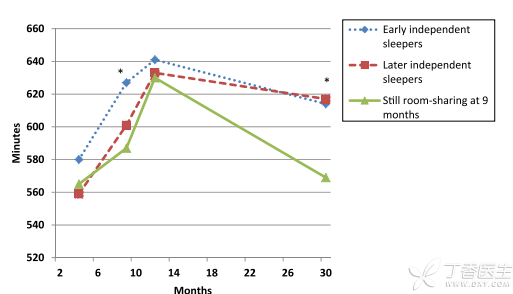If there is a what that every novice mother dreams of, it must be a good night’s sleep. The baby’s sleep problem at night has always been a big proposition perplexing newborn parents, “sharing rooms and beds” and “sharing rooms and beds” have been controversial.
AAP in the United States: Children under one year old are divided into beds and rooms.
In November 2016, AAP updated several recommendations on a safe sleep environment for babies. In this recommendation, Reaffirming many agreed opinions on the sleeping environment of babies, For example, sleeping in the supine position, Sleep on a flat, solid surface, Roommates but separate beds, Do not place any soft covering. Avoid exposure to smoking, alcohol, drugs, Adhere to breast-feeding, regular vaccination, The use of pacifiers is also helpful to reduce the occurrence of sudden infant death. In addition to the above suggestions, The latest edition of the guidelines emphasizes the importance of sleeping in the same room but in separate beds. The AAP guidelines recommend that newborns should sleep in the same room with their parents for the first 6 months after birth, preferably before the child is 1 year old, but need to sleep in their crib or cradle.
Why does pediatrics advocate housing distribution after one year old? Not because of security, but because of security, minimize the occurrence of sudden infant death syndrome (SIDS).
New Study: Infants Sleep More Lasting in Separated Rooms after 6 Months of Age
A recent follow-up study published in Pediatrics challenged the advice of the American Academy of Pediatrics to consider sleeping in separate rooms after the age of 1.
From January 2012 to March 2014, the study recruited parturients and live full-term newborns (weight ≥ 2500g) from the maternity ward of S.Hershey Medical Center of Pennsylvania State University. A total of 230 groups of cases (mothers and babies) were recruited and followed up continuously. Regular family follow-up was conducted at the ages of 3-4 weeks, 4 months, 6 months, 9 months, 1 year and 2 years respectively.
Of all the babies enrolled in the group, 142 groups (62%) were in the early independent sleep group (the babies had already slept in independent rooms at the age of 4 months); 62 groups (27%) were late independent sleep feet (babies began to sleep in independent rooms between 4 and 9 months old); 26 groups (11%) were still sleeping in the same room at the age of 9 months.
The results show that the two groups of babies who started to sleep independently from April to September sleep longer than the babies who did not sleep independently in September, and the babies who slept independently in the early stage are more likely to form healthy sleep patterns (sleep before 8 o’clock).
Add: The sleep control of these groups, including the number of night wakes, the duration of sleep, and the number of milk sleeps (which should be obtained from the research content or the table), please give the screenshots of relevant research icons and the schematic of calculation methods.
Table 1 Sleep monitoring at the age of 4 months
Table 2 Sleep monitoring at the age of 9 months
Fig. 3 Night Sleep Duration of Infants with Different Rooms and Same Rooms at 4.9. 12.30 Months

30-month sleep monitoring report: The sleep time at night in the independent sleep group was longer than that in the same room group in September, about 45min longer.
Summary:
Considering that babies are more prone to separation anxiety during the process of sleeping in separate rooms at the age of 1, the study suggests that babies should try to sleep in separate beds and separate rooms within 1 year old and earlier to help babies establish healthy sleep.
Hidden Danger of Housing Distribution: Sudden Infant Death Syndrome?
According to the CDC survey in the United States, one case of sudden infant death syndrome may occur in every 1,000 live births. According to relevant studies, 90% of sudden infant death syndrome occurs within 6 months, with the peak period being 1-4 months old. The incidence rate decreases after 4 months and is rare after 8 months.
At the same time, the Pennsylvania State University study showed that compared with the independent sleep group, Babies aged 4 months or 9 months who still do not sleep in separate rooms also have more unsafe sleep scenes, More likely to happen to sleep-related deaths Many parents believe that In order to prevent the occurrence of sudden infant death syndrome (SIDS), it is best to keep the baby close to you at any time. However, researchers said that up to 90% of sudden infant death cases occur in the first six months of the baby’s life. In other words, the risk of sudden death should be much lower for babies after six months, whether they share or share rooms with adults.
What should Chinese parents do?
Interview users who get up early and divide their rooms-
In China, it may be more normal for parents to share the same room or even sleep with their babies. As for the suggestion of housing distribution, the domestic saying is: housing distribution can be carried out after the age of 3, and many so-called experts claim that housing distribution too early or even housing distribution will make babies insecure.
It is very difficult for us to make it possible for young babies like foreign parents to sleep in separate beds and rooms with their parents.
But sometimes, we really underestimate the potential of our children, don’t we
References:
